

ON THIS PAGE ARE BIRDS THAT VISIT NEW ZEALAND AND ARE RARELY SEEN.
SCROLL DOWN TO FIND THE FOLLOWING BIRDS:
![]()
NANKEEN NIGHT HERON - GLOSSY IBIS - MALAY SPOTTED DOVE -
SPINE-TAILED SWIFT -BROADBILLED ROLLAR & ORIENTAL CUCKOO
KOOKABURRA
![]()
NANKEEN NIGHT HERON
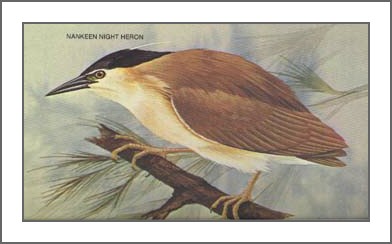
Nankeen Night Heron Nycticorax caledonicus FAMILY: Ardeidae Visitor with several sub-species in the SW Pacific, Indonesia and Australia. There was an unsuccessful liberation in Wellington in 1852. Fully protected. Similar size to the White-faced Heron with short neck and legs. The immature bird is blackish-brown with white spots above with mottled buff and white below. These birds fly heavily with the neck retracted. They actively feed at night and perch in densely foliaged trees during the day. A very rare visitor to NZ with records from both main islands. They feed on fish and amphibia, crustacea and insects. Breeding in Australia October to March. The nest is roughly made of sticks, on branches usually above water in colonies. The eggs, 2-4, are bluish-green.
![]()
GLOSSY IBIS
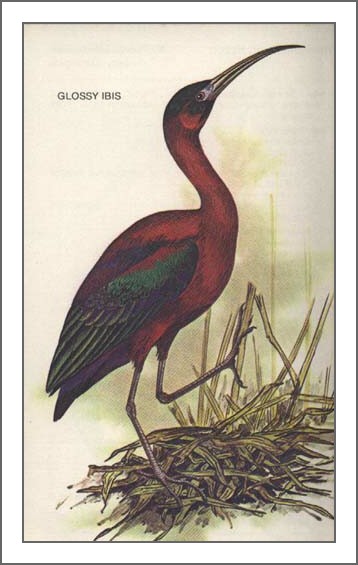
Glossy Ibis Plegadis falcinellus FAMILY: Threskiornithidae Visitor also found in the East Indies, Java, Philippines and Australia, with varius sub-species throughout Asia, Europe and America. Fully protected. The size of a White Heron, this bird is all dark with bright reflections in strong light. The neck and long curved bill are extended in flight, with the legs trailing beyond the tail. In flight they have rapid wing beats alternating with long glides. The voice is a grunt. The immature bird is duller and lighter, with greyish streaks on the head and neck. This bird is a rare visitor, sometimes in flocks. They usually arrive following drought in Australia. They are found in swampy areas and shallow water and feed on fish, molluscs, amphibia, crustacea and insects in vegetation. They feed with a side-swiping or stabbing motion of the bill in shallow water or on land. They breed in Australia from October to February and the nest is in trees, bushes or reeds above water. The eggs, 3-4, are blue with a green tinge.
![]()
MALAY SPOTTED DOVE
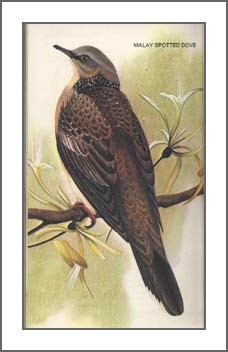
Malay Spotted Dove Streptopelia chinensis FAMILY: Columbidae Introduced from Asia as a cage bird and now breeding wild from escaped stock. Not protected. This bird is half the size of the Rock Pigeon with a long white-tipped tail. They have a black collar with white spots and a slightly rosy coloured breast. The immature is duller all over and lacks the black collar. They have a spectacular display flight, with wings and tail widely spread. They have a melodius multi-syllabic cooing call. Found in the greater Auckland area in open gardens and parks and roosting in trees, on TV arials, telegraph poles and rooftops. They feed on the ground and lawns on seeds. Breeding is throughout the year. The nest is a flimsy cup-shaped platform of twigs, well concealed in large dense trees. The eggs, 2, are white. There is probably more than one clutch per year.
![]()
SPINE-TAILED SWIFT
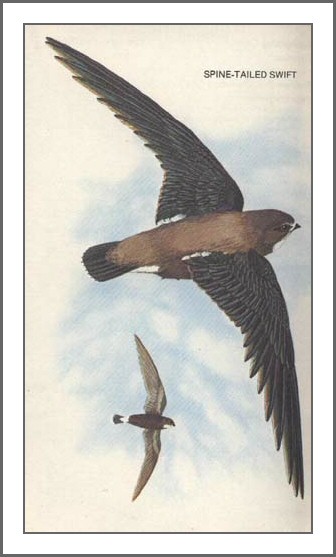
Spine-tailed Swift Chaetura caudacuta FAMILY: Apodidae Visitor, breeding in NE Asia and migrating to Australia. Fully protected. These birds are twice the size of the Welcome Swallow with long thin pointed wings and short, rounded tail. They appear all dark when in flight except for the white area below the tail. They have a fast-wheeling flight, alternating between very fast shallow wing beats and glides. These birds are rare visitors occasionally straggling to NZ. They can possibly be seen throughout the country in open country and along western sea coasts. They feed on high flying insects over land and water. Breeding in NE Asia from May to August and the mud nest is built on rock faces under cover. The eggs, 2, are white.
![]()
BROAD-BILLED ROLLER & ORIENTAL CUCKOO
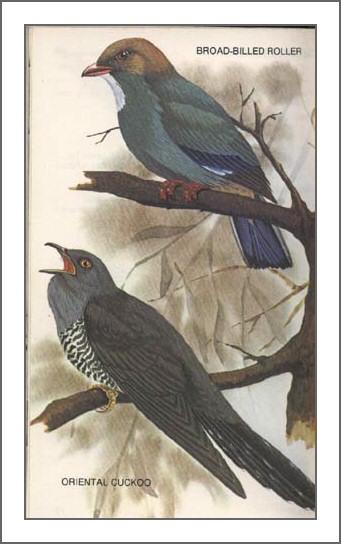
Broad-billed Roller / Dollar Bird Eurystomus orientalis FAMILY: Coraciidae Visitor, breeding in Australia and migrating to the New Guinea area. Fully protected. Same size as a Tui, with red bill and feet and the under-wing showing a large bluish-green spot - white 'dollar'. They have a tendency to sit hunched up on bare branches in high trees. They are mostly solitary and fly high with a slow wing-beat. A rare straggler to NZ and recorded mainly from May to March throughout NZ, but mainly coastal. They feed by 'hawking' on flying insects. Breeding is in Australia from October to January and the nest is an unlined hole high up in a dead tree. The eggs, 3-5, are white.
Oriental Cuckoo Cuculus saturatus FAMILY: Cuculidae Visitor to NZ, these birds breed in Central and E Asia and migrate south to S Asia and Australia. Fully protected. Bigger than a Blackbird with dark grey above and striking black and white bars on the underside. The immature birds lack the grey throat. They have a long tail and pointed wings and their swift, gliding flight is often mistaken for a hawk. They are rare stragglers to NZ with excisting records mainly on the west coasts of the main islands. They can be seen throughout the Summer in open country, sometimes perching on bare branches or posts. They feed on caterpillars, cicadas and other insects. As with other cuckoos, this bird is a parasitic breeder, in Central and E Asia.
![]()
KOOKABURRA
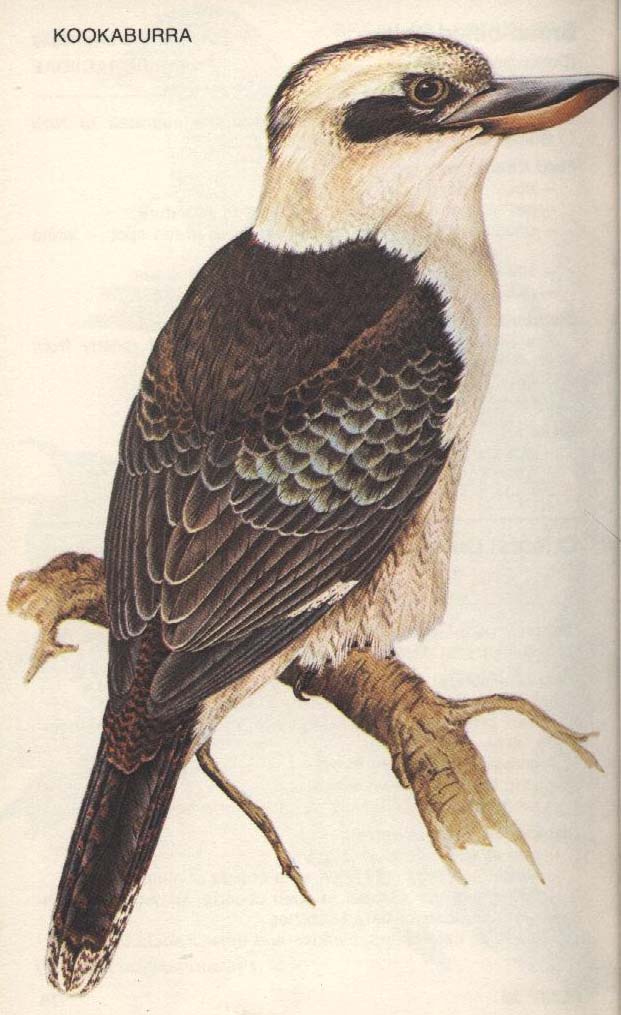
Kookaburra Dacelo gigas FAMILY: Alcedinidae Introduced from Australia between 1866-1880. Not protected. This bird is a giant kingfisher, with a very heavy large bill, dark eye-strap and raucous "laughter" as its call. The flight of these birds is short, slow and heavy. They usually sit very still on tops of poles, trees, stumps and wires. They were originally liberated at Kawau Island near Auckland and have spread to the mainland and north to Wangarei and Kaipara, with records elsewhere including the South Island. These may be stragglers from Australia. They can be found on the edge of forests and bush. Kookaburra feed on birds, small mammals, insects, worms, frogs, lizards, and domestic food scraps. They breed in Australia from September to January in hollow trees. The eggs, 2-4, are glossy-white and rounded.
![]()











